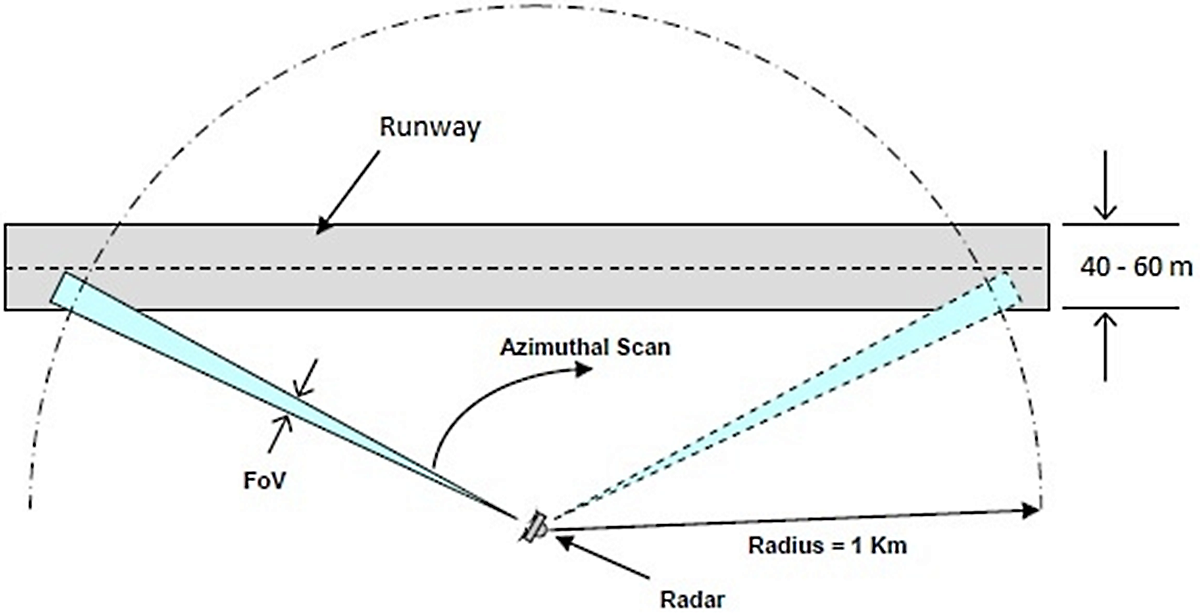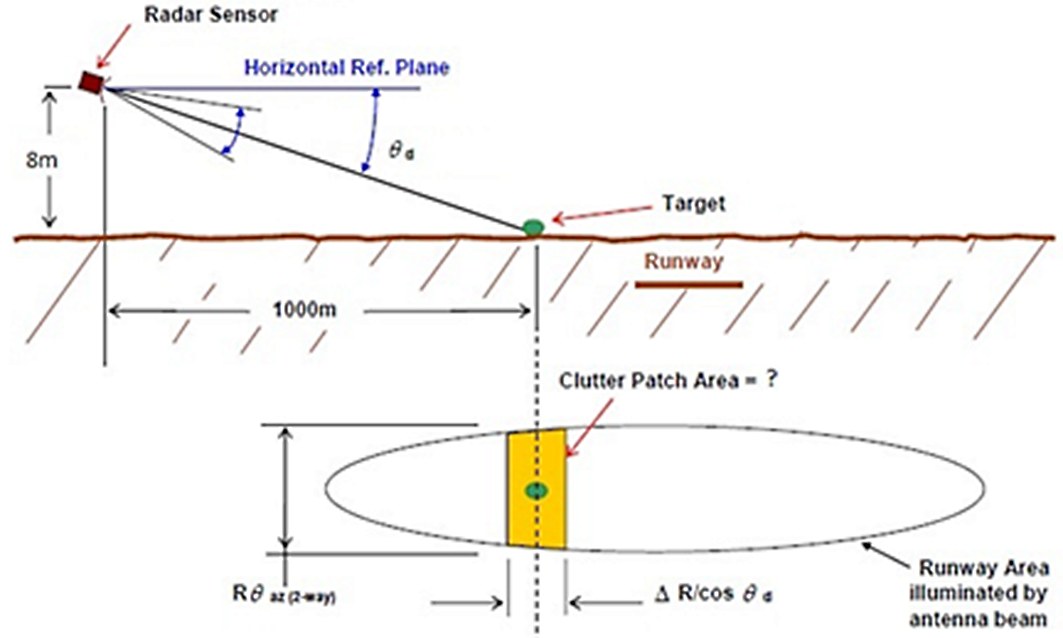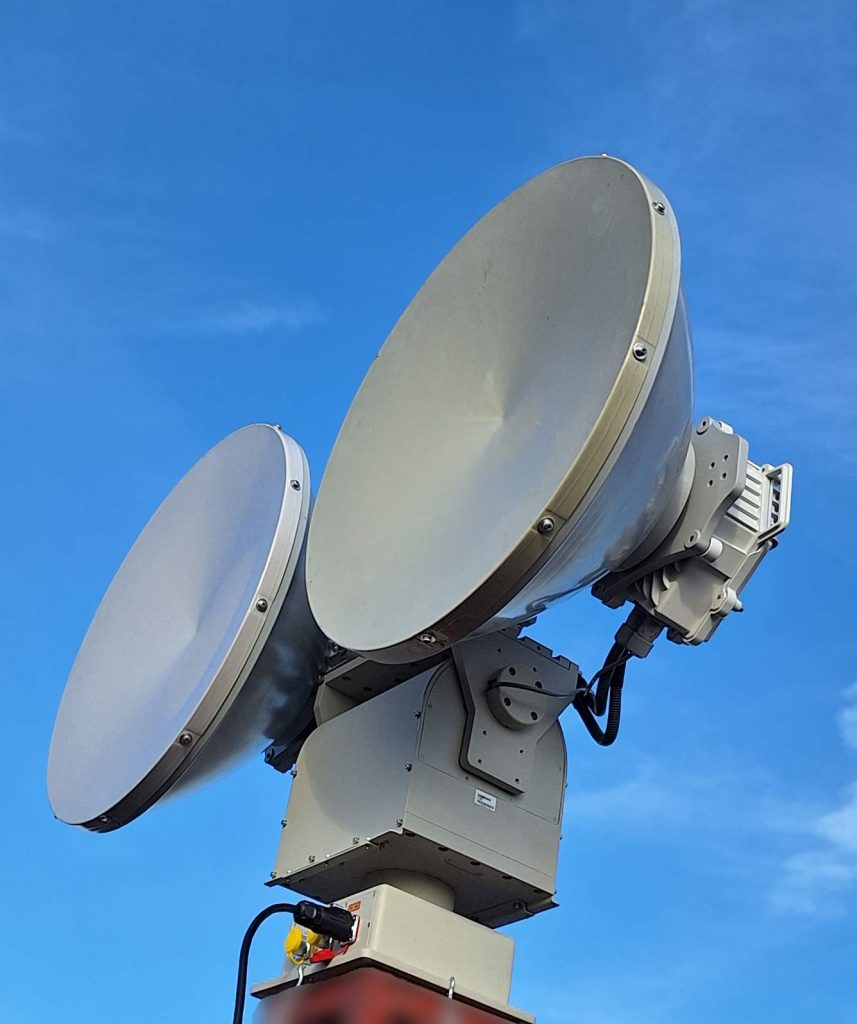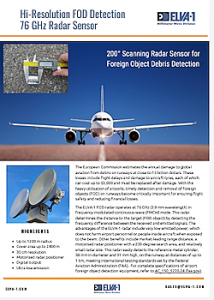76-77 GHz FOD detection radar operates in FCC unlicensed band at airport locations under Part 15 of the Commission’s rules
Read ELVA-1’s 76-77 GHz FOD detection radar datasheet.
See Report on field trial experiment of FOD Radar
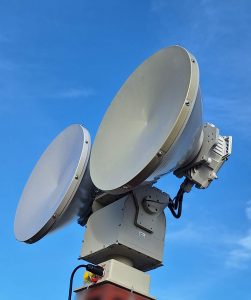
The history of aviation knows many cases in which debris objects on the runway caused sufficient damage to the aircraft during take-off or landing. Due to the relatively small size of FOD debris, a high-resolution radar is required to find and locate such objects.
The European Commission estimates the annual damage to global aviation from runway debris to be nearly 13 billion dollars. This includes flight delays and damage to aircraft wheel tyres, each of which costs up to $5,000 and must be replaced with a new one after the damage.
ELVA-1 FOD radar operates at 76 GHz (3.9 mm wavelength) in frequency-modulated continuous-wave (FMCW) mode. FMCW radar determines the distance to the target (FOD object) by detecting the frequency difference between the received and emitted radar signals.
The advantage of ELVA-1 FMCW radar is very low transpired power which doesn’t harm airport personnel or people inside aircraft when getting into the beam. Other pros of ELVA-1 radar are market-winning range distance, motorized radar positioner with a 200-degree search area, and relatively small radar size.
The FAA gave birth to a method of evaluating the ability of an airfield FOD radar to locate foreign objects on the runway using a reference metal cylinder 38 mm in diameter and 31 mm high (unpainted). This type of testing is now used worldwide.
ELVA-1 radar easily finds the reference cylinder on the runway at a distance of up to 1 km. Below you can see a photo of the cylinder as well as an example of typical debris on the runway.
ELVA-1 recommends installing the FOD radar at a distance of about 125 metres from the runway side edge at a height of 8 metres.
Download 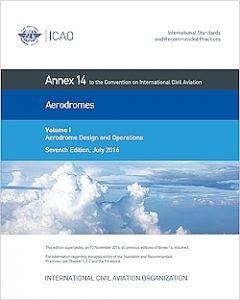 Annex 14 to the Convention on International Civil Aviation “Volume I,
Annex 14 to the Convention on International Civil Aviation “Volume I,
Aerodrome Design and Operations”.
According to the FAA, over 60% of the FOD items were made of metal, followed by 18% of the items made of rubber. Our radar can detect both metal and rubber parts. Radar can also detect defects in concrete or asphalt pavement on runways and taxiways and remove them from the radar picture as permanent elements rather than lost from airplanes and airfield vehicles.
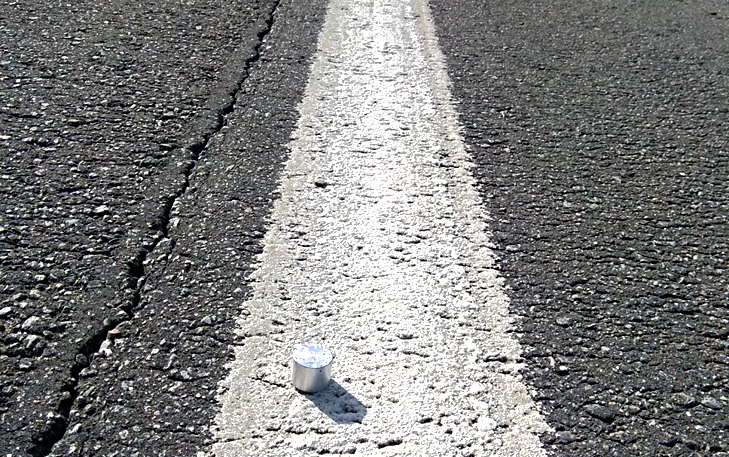
Reference metal cylinder 38 mm in diameter and 31 mm high

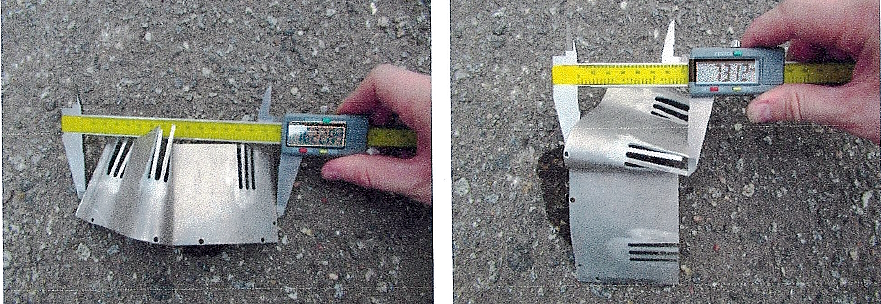


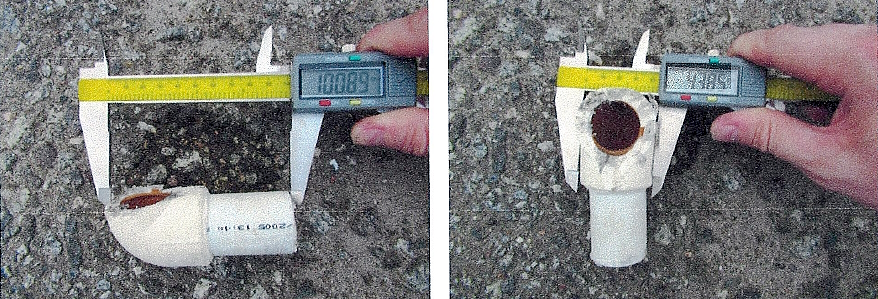
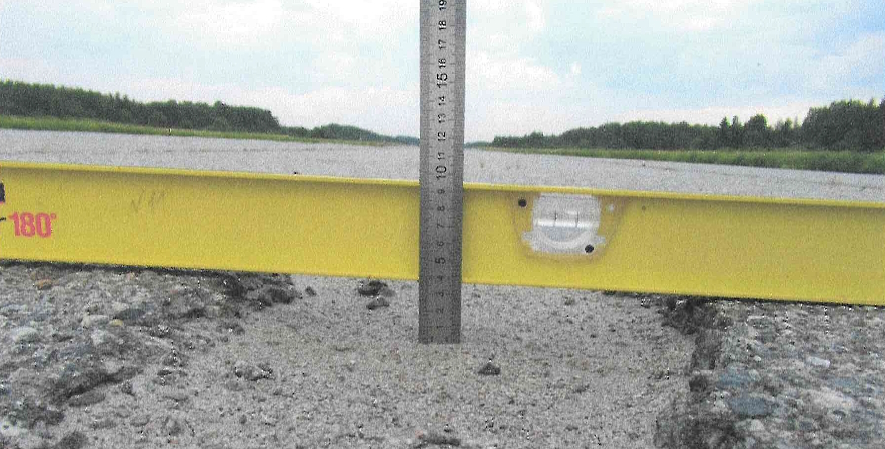
FOD Radar Features
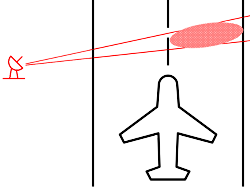 ELVA-1 FOD 76 GHz radar is intended for 24/7/365 all-weather search for debris at airport runway with the following features:
ELVA-1 FOD 76 GHz radar is intended for 24/7/365 all-weather search for debris at airport runway with the following features:
- Cyclical detection of the location of foreign objects in the zone of operation by ½ of runway width along its length,
- Ability to detect debris which is equivalent to FOD reference sample as metal cylinder sized 3.1 cm in length and 3.8 cm in diameter, at 1000 m distance.

ELVA-1 FOD radar is a long-range device with a 1000 m radius of operation. On the market, this range is one of the longest, allowing to use of 1 to 3 FOD radars for the runway.
1x FOD radar for runway at regional airports with a runway of at least 1,829 m in length is usually adequate for aircraft weighing below approximately 90 tons as Airbus 319, Airbus 320-100 or Boeing 737-800.
 2x or 3x FOD radars for the runway at any international airport. The world’s most busy airports like Frankfurt or Singapore have runways of 4000 m in length to land Boeing 747 or Airbus 380. Thus, 2x FOD radars will be required for each runway.
2x or 3x FOD radars for the runway at any international airport. The world’s most busy airports like Frankfurt or Singapore have runways of 4000 m in length to land Boeing 747 or Airbus 380. Thus, 2x FOD radars will be required for each runway.
The world’s longest runways are the ones at Qamdo Bamda Airport in China (5,500 m) and Zhukovsky Airport in Moscow (5,400 m). In such cases, 3x FOD radars will be required, similarly.
FOD Radar Schematics
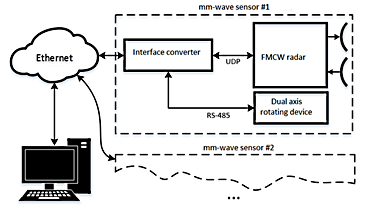 FOD radar provides raw binary data, so it has to be connected via an Ethernet network to an airport control/monitoring system for data processing and visualization. The structure of each FOD radar (also named as mm-sensor) consists of an FMCW radar and a Positioner (rotation device).
FOD radar provides raw binary data, so it has to be connected via an Ethernet network to an airport control/monitoring system for data processing and visualization. The structure of each FOD radar (also named as mm-sensor) consists of an FMCW radar and a Positioner (rotation device).
Interface Converter consists of an Ethernet switch and connects:
- Ethernet channel to FMCW radar by UDP protocol,
- RS-485 to control the unit of the Positioner device.
FOD Radar Delivery Kit includes
- 2x 76 GHz FMCW radar modules (Tx и Rx) in IP-67 cases with sealed cable for DC power and Ethernet
- 2x antennas with radomes
- 1x Positioner (rotation device) with electric motors and control electronics
- Detailed description of radar raw data specification, intended for external computerized control system.
- Radar Operation Manual in PDF.
Additional software for radar output data conversion can be developed by the ELVA-1 team according to customer requirements.
FOD FMCW-76/600/100 Technical Specifications
Scan Diagram for FOD Radar
Radar scans the runway within 180 degrees from its point automatically adjusting the beam elevation angle to keep it over the runway surface. Radar realizes a loop-like scan by ½ of the runway width along its length.
